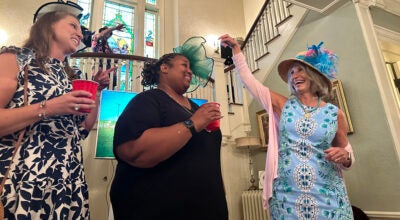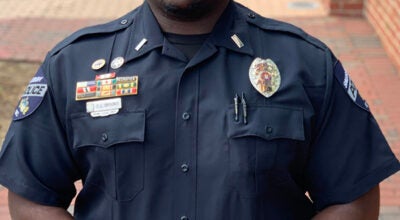RCCC Newest Building Garners LEED Certification
Published 12:00 am Wednesday, March 30, 2011
Rowan-Cabarrus Community College’s first 21st Century LEED classroom and laboratory is environmentally friendly and energy efficient, which will save taxpayers money in the long run.
Ray Paradowski, chairman of the board of trustees when the 39,000-square-foot Building 400 was being planned and constructed, says it only made sense to design it to meet the U.S. Green Building Council’s LEED (Leadership in Energy and Environmental Design) requirements. The LEED Green Building Rating SystemTM is a third-party certification program and the nationally accepted benchmark for the design, construction and operation of high-performance green buildings.
“The design makes it a good looking building as well as energy efficient and functional,” he says. “We’re quite pleased with it.”
The LEED features include such things as solar tubing and low-flow sinks and toilets; bicycle racks and preferred parking for fuel-efficient vehicles; carpeting made from recycled materials; and the use of exterior materials that reduce light pollution and the heat-island effect.
A total of 75 percent of the construction waste was recycled; 25 percent of the building materials were made of recycled products; and 37 percent of the building materials were purchased regionally, which lowered the number of miles they had to be transported, saving on fuel and reducing air pollution.
Water use inside the building was reduced 42 percent; water for irrigation, 80 percent; and energy, 19 percent.
Paradowski says he hopes college officials will also pursue energy efficient and environmentally friendly renovations and additions for aging buildings approved with the passage of a $12 million bond referendum. “We’ll try to have more glass, too, so we can take advantage of the natural light and reduce the heating required,” he says, “and make it more pleasing to the students in their learning process.”
Current Chairman Carl M. “Chip” Short, Jr., says he’s very proud of the building. “That particular building gets as much exposure as any other building we have,” he says, “because it’s designed for use by the community for police training, fire training and public safety training. It’s a good way to educate the citizens of Rowan County on what can be done for the environment, even when constructing a building.”
The architect for the new Building 400 was Yates Chreitzberg Hughes of Concord. Bill Hughes, the LEED accredited professional in the firm, says the firm designed all of the buildings on the Rowan-Cabarrus South Campus.
Most of their designs are LEED buildings, he says, but not all of the owners go through the actual certification process. Hughes says the U.S. Green Building Council is a little like the Internal Revenue Service. “You send in all your documents,” he says, “and they decide whether to accept it or audit or ask for more information … It’s very laborious, very intensive.
“We were very happy that they decided to take it on,” Hughes says of Rowan-Cabarrus officials. “It was very much a team effort between the architects, our engineers, the college and the contractors.”
Building 400 is designed for gold-level certification, but could drop to a silver rating, depending on the council’s decision. Hughes says the $8.866 million project came in substantially under budget due to the economy, so the LEED design only cost $200,000 more than a comparable conventional facility.
“The college was quite eager to embrace sustainability,” he says. “This building was really kind of a showcase building for them and us.”
Hughes says most of the older buildings on the other campus are white, masonry-type buildings in the 1960s-1970s style. “This was a big departure from that,” he says. “It’s more of a high tech, innovative, progressive looking building.”
Short says Building 400 was a great deal for the county because about $5.2 million of the construction cost came from the state and $3.6 million from the county. The long-range plans for the North Campus call for Building 400 to be more of a focal point when the projects approved with the bond referendum are complete.
Jeanie Moore, vice president for corporate and continuing education, whose office is in Building 400, says she loves it. “The building itself has a lot of nice features. The paint and finishes are low VOC (volatile organic compounds), she says, “so it never smelled like a new building smells of paint varnishes.”
The windows are designed to bring in lots of natural light and make for a more pleasant work environment. “I looked out this morning and saw the beautiful trees in bloom,” Moore says. “It just gives you a better attitude about being at work.
“I’m sure that’s also true for our students,” she says, noting that 500-to-600 students use the building every week. “So many of our students are adults that have full-time jobs, part-time jobs and they’re looking after their families. It’s really nice to have them in a building where they can be as de-stressed as possible.”
Students, staff and visitors to the building can read about Building 400’s environmentally friendly features on posters throughout the building. “So we’re learning every day,” Moore says, “and hopefully, we’re teaching every day about the environmental parts, about the sustainability parts and about how we need to be good stewards both of our natural resources and our other resources so that we don’t continue to accumulate trash that can’t be recycled and used again.”



